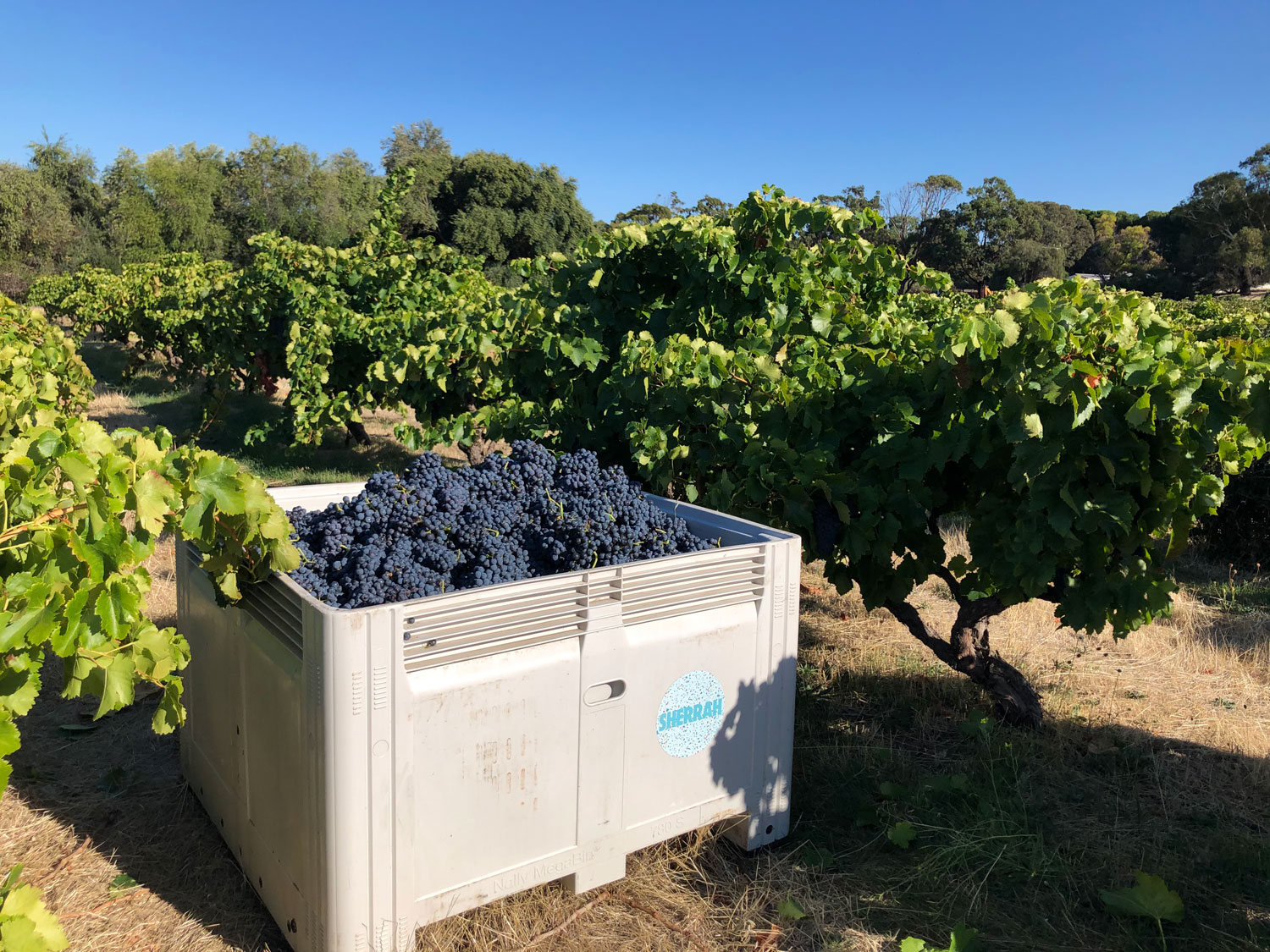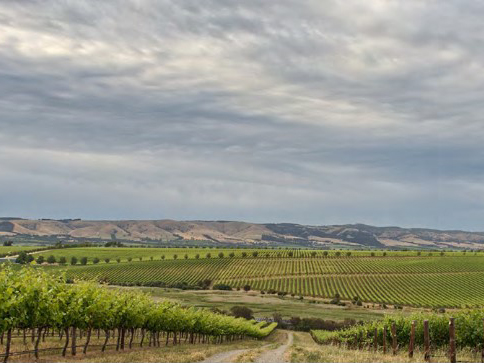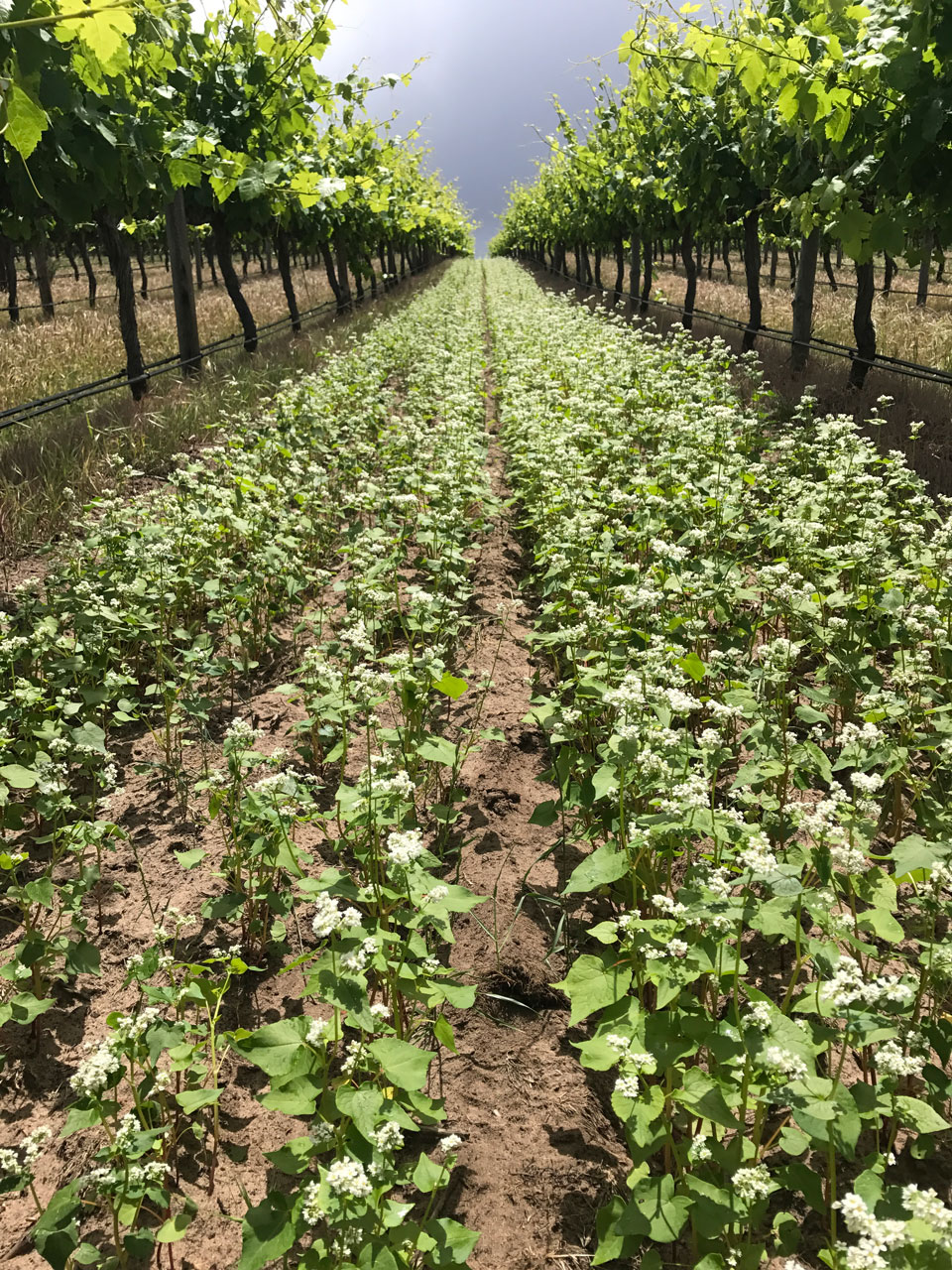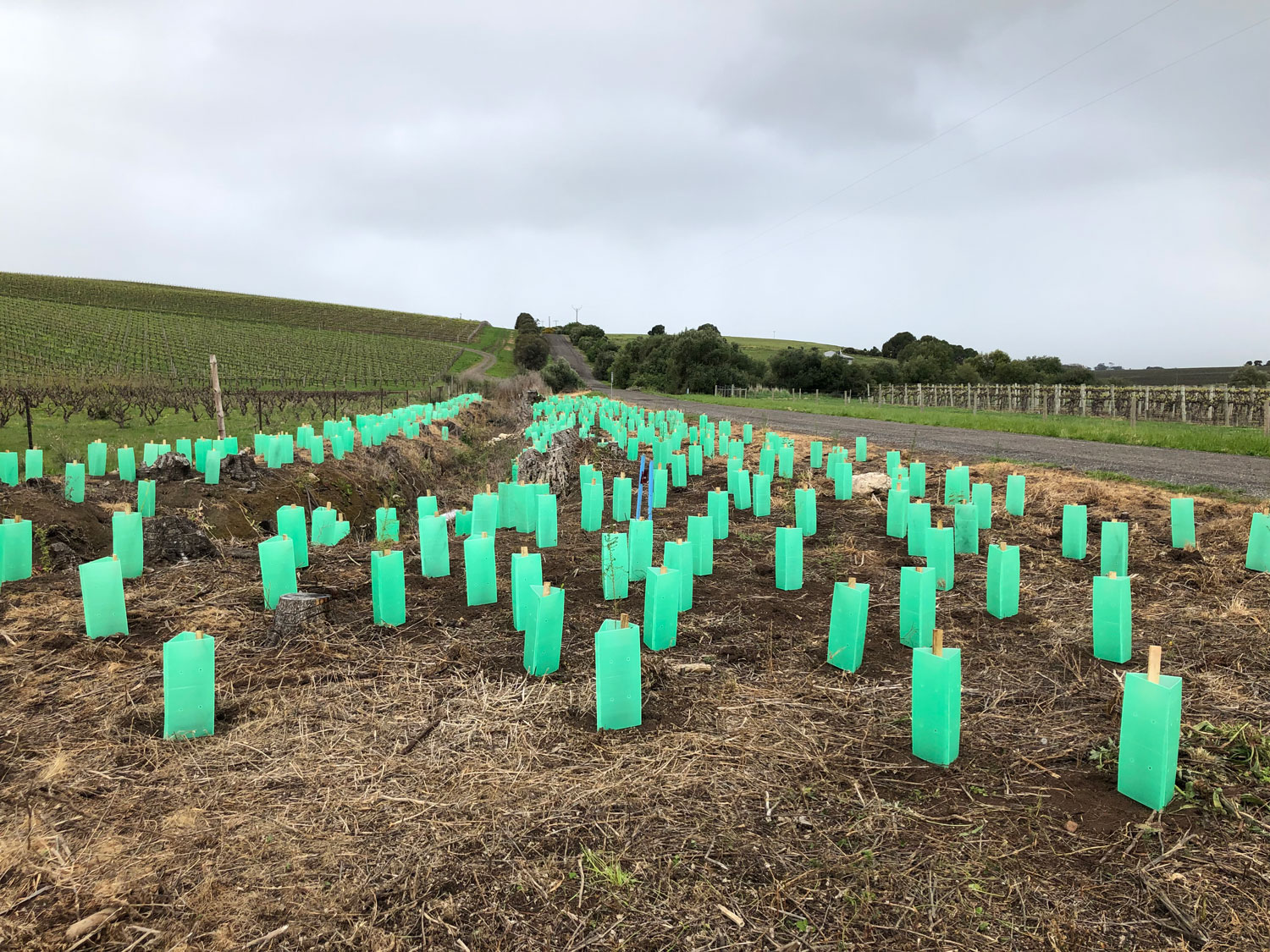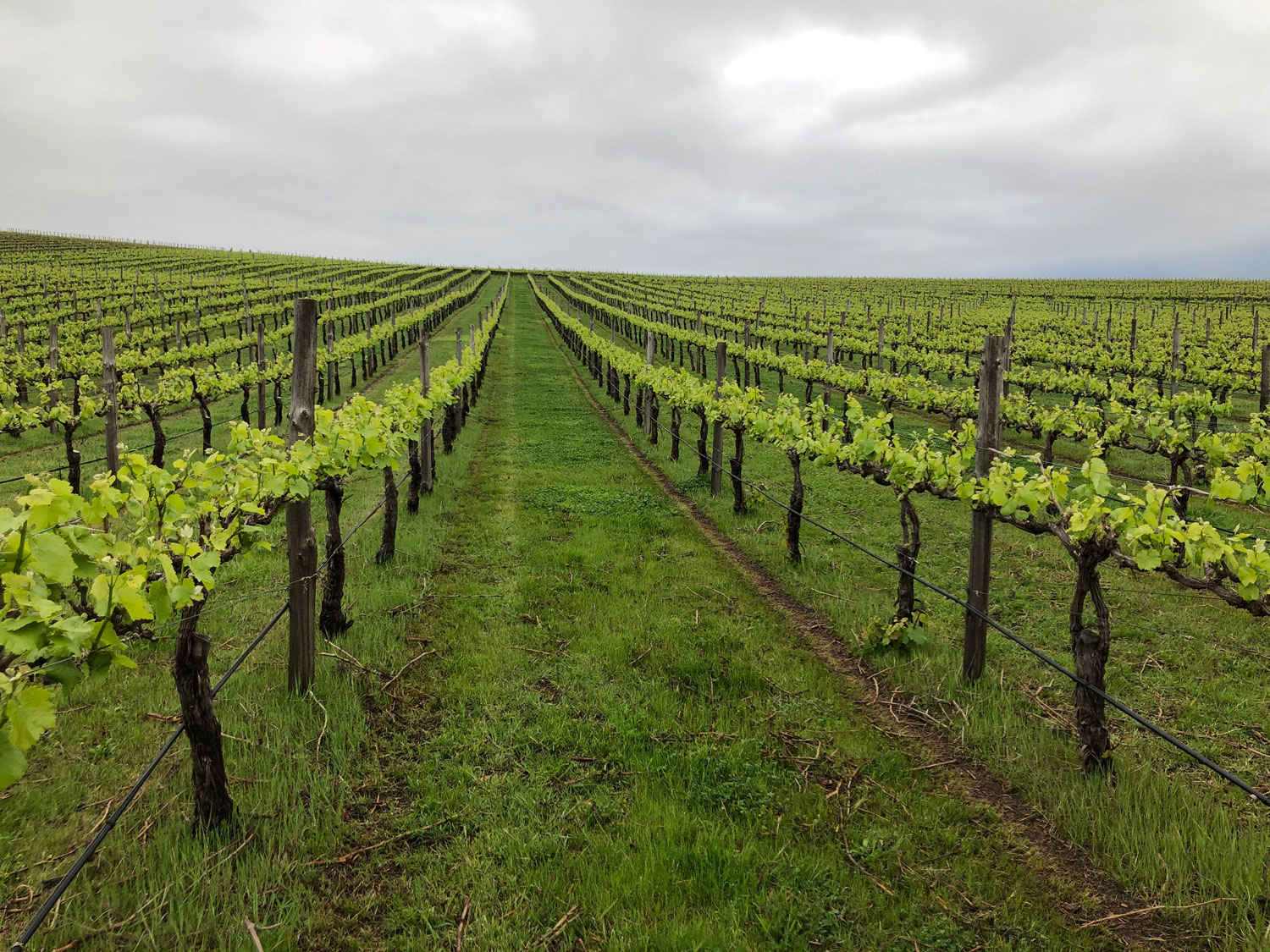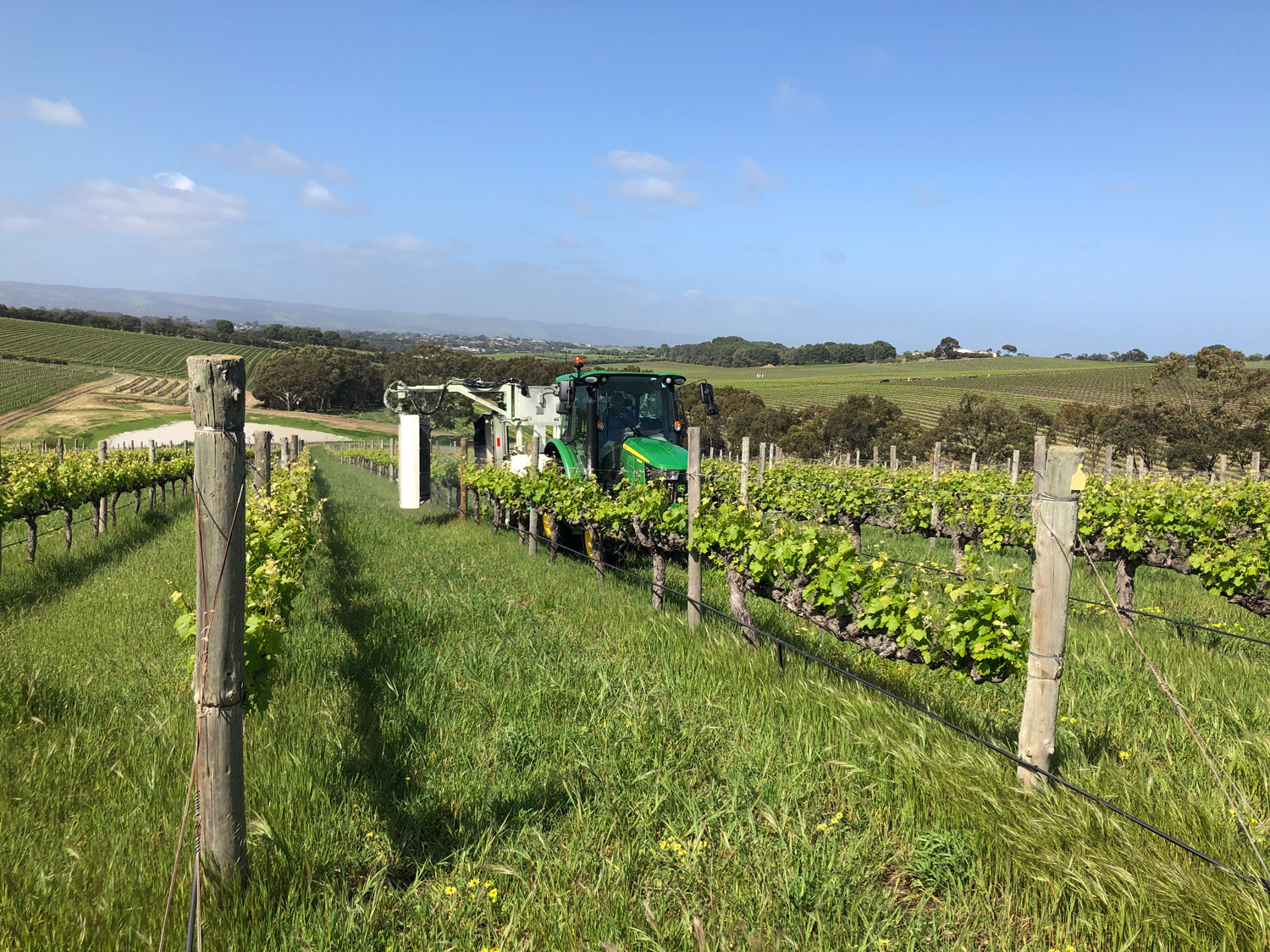Ben Lacey’s Branson Road Vineyard in the McLaren Vale subregion of Tatachilla supplies fruit to makers both big and small, from Treasury Wine Estates to new stars like Bondar and Sherrah. With just under 14 hectares of vines, Lacey grows four varieties – shiraz, cabernet sauvignon, fiano and grenache – across four distinct geologies and a range of soil types, with sea breezes (the vineyard is 3km from the ocean) cooling the site in the afternoons. With a focus on soil health and revegetating non-vineyard land, the vineyard has gone from growing average fruit to achieving consistently premium results across the blocks.
Lacey works with eight wineries, from legends like Chapel Hill to the newer wave of makers, such as Sherrah, Dodgy Brothers and Bondar. “We collaborate with several winemakers from very small to large producers,” he says. “We are always working with them towards a common goal and fine tuning our growing methods to suit the styles they are looking for. I am very involved in the local viticulture community, bouncing ideas off other viticulturists at field days and other informal catch ups. We work collaboratively sharing ideas and sharing our own experiences on what worked for us and what didn’t, looking at new methods and techniques that will help grow better grapes more sustainably.”
The vineyard was originally planted to shiraz in 2001 then chardonnay in 2003, and while shiraz is naturally a McLaren Vale strength, chardonnay is less desirable and less profitable. It also soaks up a lot of irrigation, Lacey says. In 2013, he grafted some of the chardonnay to cabernet sauvignon and the remainder the following year to fiano. Those two varieties were an astute investment in the economic sustainability of the enterprise.
The fiano fruit is in demand from a newer wave of makers who are seeking diversity from the Vale stalwarts, and also to find viable white wine options in the warm region, while the cabernet provides a consistent pulse to the business. Cabernet may not be overly glamorous at present, but the high quality of Lacey’s fruit and consistently good yields sees it all graded highly and sold to Treasury Wine Estates (Penfolds et al) on a consistent basis. It’s the bread and butter, if you like, while the other varieties end up in a range of premium products, with Lacey having raised the shiraz from ‘C Grade’ to ‘A Grade’.
The other variety on the Branson Road Vineyard is grenache, which Lacey planted as bush vines in 2004, with Lacey saying his dad thought he was mad at the time. The vindication for the foresight is evident in the recent rise of grenache in the Vale, with fruit now highly sought after and sold at a premium. In 2004, when he planted the vines, grenache was in near terminal decline, and no-one was planting it. In fact, much of it was still being removed.
The land committed to grenache also illustrates a vital element of Lacey’s stewardship, being an area formerly thick with wild olive trees. “We have been actively managing our landscape around our vineyard, removing woody weeds and revegetating,” he says. “The last project has been to clear an overgrown creek from wall-to-wall olives and dogrose. We have just planted back with 15 different native species endemic to our area. This greatly increases the biodiversity of the creek. Many of these plants will provide a valuable habitat to beneficial insects, therefore reducing our need for insecticides.”
Amongst the rows, buckwheat is planted to provide a pollen source to further encourage beneficial insects. Lacey also works closely with the local council and Biodiversity McLaren Vale to preserve remnant vegetation and revegetate. “To leave the land in better condition that we found it means that not only does the vineyard have to be productive and economically viable but the natural ecosystem that the vineyard sits in also must be thriving,” he says. “We also need to have a system that respects our neighbours and the wider community. We also like to be active in the local community helping lend a hand where we can.”
The water for irrigation is 100 per cent recycled and applied via a fully automated online system, which employs continuous soil-moisture monitoring to ensure accurate targeted applications. Mulch is applied under vine based on spectral imaging that identifies weaker growth areas, which helps to even up the variability in the blocks and reduces irrigation use, while compost and gypsum are spread based on frequent soil tests. All data is logged in the Platfarm app for efficient management. For the last decade Lacey has employed sheep to combat weeds, reducing herbicide use and tractor passes and having other benefits.
“We have made soil health a great priority,” says Lacey. “This has been helped through our management by rotationally grazing sheep from our pastures in the vineyard through winter, which aids in the natural carbon cycle, allowing an environment for dung beetles to help in the nutrient cycling. We also have done large amounts of mulch and compost spreading, all aiding in the soil health and organic carbon levels in the soil.”
The long-term benefits of Lacey’s approach are clearly illustrated by the demand for his fruit. “We have turned around a commercial vineyard growing large tonnes of two grape varieties for one large winery to now growing four varieties for eight different wineries from small to large,” he says. “Our vineyard now goes into four single vineyard wines with our vineyard name mentioned on many of the labels. I feel the grapes and therefore resultant wines of this vineyard have got a great sense of place and really connect with the maritime nature of the terroir.”

